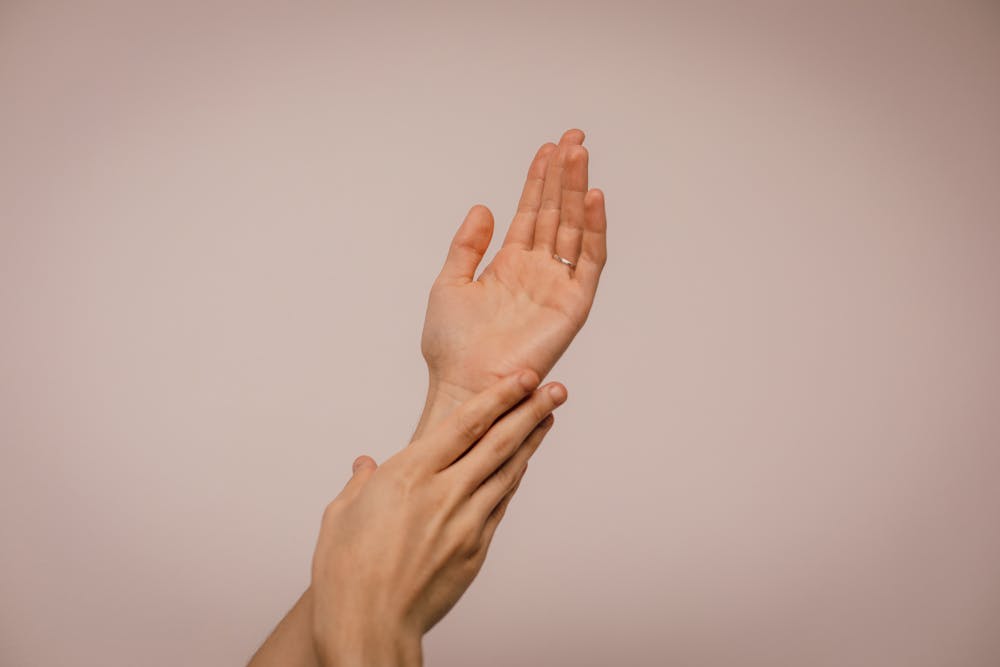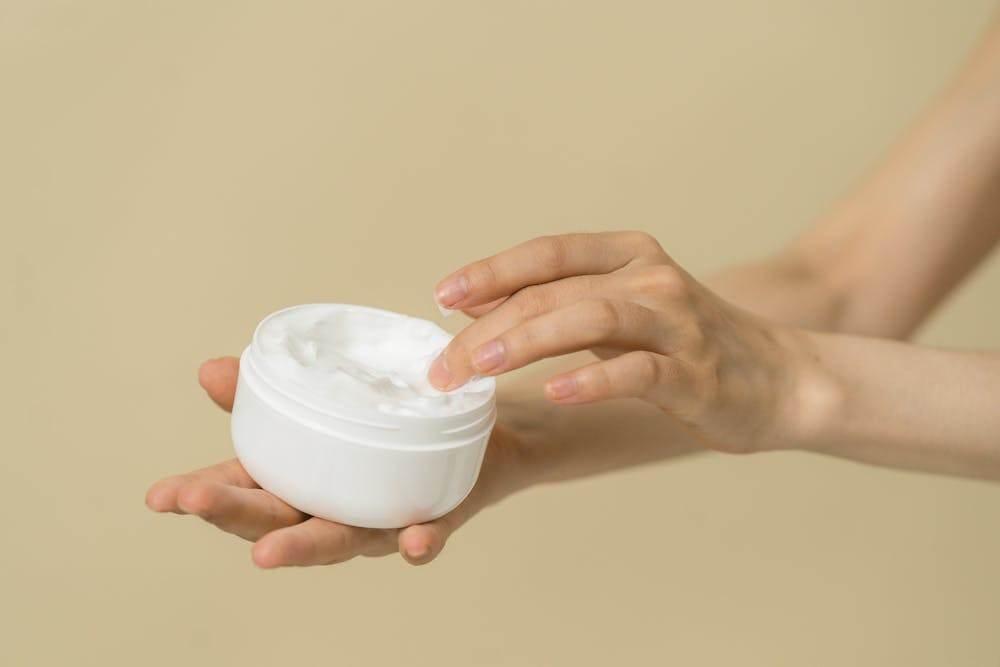Your great-grandmother knew something that billion-dollar beauty conglomerates don't want you to remember: the best skincare ingredients came from the farmyard, not the laboratory.
While modern consumers scan ingredient lists filled with unpronounceable synthetic compounds, our ancestors trusted a single, powerful ingredient that transformed skin for millennia, grass-fed beef tallow. Today, as the clean beauty movement gains momentum, we're witnessing a fascinating showdown between ancestral wisdom and industrial innovation.
The question isn't whether tallow works, centuries of use prove that. The question is: what exactly are you putting on your skin, and how does it measure up to what nature perfected long before the first chemistry lab opened its doors?
When Your Moisturizer Becomes Your Problem
Picture this: You're standing in your bathroom, frustrated, applying your third layer of expensive moisturizer because your skin still feels tight and flaky. Sound familiar? You're not alone, and it's not your fault.
The truth is, many people are unknowingly trapped in what we call the "synthetic skincare cycle." You buy a product promising miracle results, it works temporarily, but then your skin seems to need more and more just to feel normal. Meanwhile, you're dealing with unexpected breakouts, increased sensitivity, or that weird film-like feeling that never quite absorbs.
What if the problem isn't your skin, but what you're putting on it?
The Tallow Difference: What Your Skin Actually Recognizes
Here's something the beauty industry doesn't want you to know: your skin produces something called sebum, and grass-fed beef tallow is almost identical to it. That's not marketing speak, that's biology.
What this means for you:
- No more waiting 20 minutes for your moisturizer to absorb (tallow melts instantly into skin)
- No more sticky, greasy feeling that transfers onto your clothes
- No more needing to reapply throughout the day because it actually penetrates
The science is beautifully simple: tallow contains palmitic acid (26%), stearic acid (14%), and oleic acid (43%), the exact same fatty acids your skin naturally produces. It's like speaking your skin's native language instead of forcing it to translate synthetic chemicals.
The Conventional Trap: Why Your Expensive Creams Aren't Working
Let's decode what's really in that $80 moisturizer you've been using:
The Water Problem: Most conventional moisturizers are 60-80% water. You're essentially paying premium prices for fancy water that evaporates, leaving your skin as dry as before.
The Silicone Situation: Ingredients like dimethicone create the illusion of smooth skin by forming a plastic-like film on top. But here's the catch, while it feels silky initially, it's actually preventing your skin from breathing and self-regulating. That's why your skin feels worse when you stop using it.
The Preservative Predicament: Because these products contain water, they need heavy-duty preservatives to prevent bacterial growth. Parabens, phenoxyethanol, and formaldehyde-releasing agents are doing their job, but they're also potential hormone disruptors and common allergens.
The Fragrance Fiasco: That lovely scent? It's often a cocktail of undisclosed chemicals. Fragrance is actually one of the top causes of skin sensitization, which explains why your skin might be more reactive now than it was years ago.
Why Your Skin Keeps Getting Worse (And How Tallow Fixes It)
You will always question why these products aren't actually helping, well it starts out small and ends up being something more complicated then it needed to be.
The Inflammation Spiral Most People Don't See Coming
You start with one small skin issue, maybe some dryness or the occasional breakout. So you buy a product to fix it. Then you need another product to fix the problems the first product created. Before you know it, you're using a 10-step routine and your skin is more reactive than ever.
This isn't coincidence, it's chemistry.
The Synthetic Inflammation Cascade: Many conventional ingredients trigger low-grade inflammation that's not immediately obvious. You might notice your skin looking "plump" initially (that's actually mild swelling), but over time, this chronic inflammation breaks down collagen and disrupts your skin's natural barrier function.
Research shows that parabens can trigger inflammatory responses in up to 4% of the population, and that's just one ingredient in a product that might contain 20-30 potentially inflammatory compounds.
The Tallow Solution: Grass-fed tallow naturally contains conjugated linoleic acid (CLA), which actively reduces inflammation. Users consistently report that their skin becomes calmer, less reactive, and more resilient over time. One customer told us, "I used to break out from everything, even products labeled 'for sensitive skin.' With tallow, my skin finally feels peaceful."
The Absorption Reality Check
Ever notice how some moisturizers seem to just sit on your skin? There's a scientific reason for that, and it's costing you results.
Why Conventional Products Struggle to Penetrate: Human skin is designed to keep things out, it's a barrier, after all. Most synthetic ingredients are foreign to your skin's biology, so they need chemical "penetration enhancers" (like propylene glycol) to force their way in. Even then, much of what you apply never actually reaches the cells that need it.
The Tallow Advantage: Because tallow's molecular structure mirrors your natural sebum, it doesn't need to force its way through, it flows naturally into skin cells. This means you're getting maximum benefit from minimal products. Many of our customers are shocked to discover they need only a fraction of the amount they used with conventional products.
"I thought I had dry skin for years. Turns out, my moisturizer just wasn't actually moisturizing." - Sarah, Purishh customer
The Dependency Trap: Why You Can't Stop Using Your Current Products
Here's a question that might make you uncomfortable: What happens to your skin when you run out of your favorite moisturizer and don't replace it immediately?
If the answer is "it gets worse than before I started using it," you're experiencing product dependency, and it's by design.
The Synthetic Dependency Cycle Explained
Many conventional skincare products work by suppressing your skin's natural functions rather than supporting them. Silicones create a temporary barrier that makes skin feel smooth, but they also prevent your skin from regulating its own oil production. When you stop using them, your skin doesn't remember how to function normally.
The Signs You're Trapped:
- Your skin freaks out when you skip a day
- You need more product over time to get the same results
- You've become sensitive to products you used to tolerate
- Your skin looks worse now than before you started your routine
The Tallow Liberation Process
Here's what's different about tallow: it teaches your skin to be healthy on its own. Instead of creating dependency, it provides the building blocks your skin needs to repair and strengthen its natural barrier function.
What Our Customers Experience:
- Week 1-2: Immediate relief from tightness and irritation
- Week 3-4: Reduced need for frequent reapplication
- Month 2-3: Skin that feels healthy even when you occasionally forget to moisturize
- Long-term: Genuine skin resilience that doesn't require constant product intervention
"I never thought I'd be someone who could get away with minimal skincare, but after six months with tallow, my skin just... works. Even my aesthetician asked what I'd been doing differently." - Maria, 34
The Vitamin Reality: Synthetic vs. Naturally Occurring
Your expensive serum might boast about its vitamin E content, but here's what they don't tell you: synthetic vitamins aren't absorbed the same way as naturally occurring ones.
The Synthetic Vitamin Problem
Most conventional products use synthetic vitamin analogues like tocopheryl acetate (synthetic vitamin E) or retinyl palmitate (synthetic vitamin A). While these sound scientific and impressive, your skin cells often can't utilize them effectively because they lack the cofactors found in natural vitamin complexes.
The Tallow Vitamin Advantage
Grass-fed tallow naturally contains vitamins A, D, E, and K in their fat-soluble, bioavailable forms, exactly as nature intended. These aren't isolated compounds added to a formula; they're part of the complete nutritional matrix that your skin cells recognize and use efficiently.
The Real-World Difference:
-
Natural vitamin A in tallow supports healthy cell turnover without the irritation of synthetic retinoids
-
Natural vitamin E provides antioxidant protection that actually penetrates skin barriers
-
Vitamin K supports healing and reduces the appearance of capillaries and dark circles
"My under-eye area used to be so dark I wouldn't leave the house without concealer. After three months of using tallow around my eyes, people keep asking if I got more sleep. I didn't—my skin just got healthier." - Jennifer, 42
The Cost Reality: What You're Actually Paying For
Let's talk about money, because your wallet probably feels the pain of your skincare routine.
The Hidden Economics of Conventional Skincare
That $65 anti-aging cream? You're paying for:
- 60-80% water (literally paying premium prices for water)
- Expensive marketing campaigns (those celebrity endorsements don't pay for themselves)
- Complex manufacturing processes (synthesizing ingredients requires expensive equipment and energy)
- Elaborate packaging (those gorgeous jars cost more than the ingredients inside)
- Markup at every distribution level (department stores need their 50-70% markup)
The actual cost of ingredients in most conventional products? Usually less than $2 per bottle.
The Tallow Value Proposition
With tallow, you're paying for the actual ingredient that does the work. Premium grass-fed Wagyu tallow might cost more upfront, but consider this:
- You use 1/3 the amount compared to conventional moisturizers
- No need for multiple products (one tallow balm often replaces serum, moisturizer, and eye cream)
- Longer shelf life (properly rendered tallow doesn't go rancid like plant oils)
- Better results mean less money spent "fixing" problems caused by other products
"I calculated that I was spending $200+ per month on skincare products. Now I spend $40 every three months on tallow products and my skin looks better than it has in years." - Patricia, 38
What Your Dermatologist Won't Tell You (But Should)
Many dermatologists are trained primarily in treating skin disease, not optimizing skin health. This creates a bias toward pharmaceutical solutions and against traditional remedies, even when the traditional approaches have superior safety profiles and effectiveness.
The Medical Bias Against Fat-Based Skincare
For decades, the medical establishment has promoted "oil-free" products, especially for acne-prone skin. But recent research reveals this approach often backfires by stripping the skin's natural protective barrier, leading to more inflammation and breakouts.
The Science They're Missing: Research shows that healthy skin barrier function depends on a balanced lipid matrix, exactly what tallow provides. A 2019 study in the Journal of Clinical Medicine found that compromised barrier function is a primary driver of inflammatory skin conditions, not excess oil production.
Why Some Doctors Are Starting to Recommend Tallow
Progressive dermatologists and functional medicine practitioners are beginning to recognize what traditional cultures always knew: the skin thrives on biocompatible fats. Dr. Sarah Ballantyne, a respected voice in autoimmune and skin health, notes that traditional fats like tallow provide essential fatty acids in forms that synthetic products simply cannot replicate.
The Generational Skin Health Crisis
Have you noticed that your grandmother's generation seemed to have better skin aging than many people today, despite having fewer products available?
What Changed (And It Wasn't Just Genetics)
Our ancestors used simple, fat-based skincare, lard, tallow, and plant oils that had been used safely for centuries. They weren't exposed to the cocktail of synthetic chemicals that modern consumers apply daily.
The Modern Skin Crisis:
- Increased rates of adult acne, even in people over 40
- Earlier onset of "aging" signs like fine lines and sensitivity
- Rising rates of contact dermatitis and skin allergies
- More people reporting that their skin "can't tolerate anything"
The Connection: Many researchers believe chronic exposure to synthetic skincare ingredients is creating a generation of people with compromised skin barrier function and increased sensitivity. It's not that we're more prone to skin problems, it's that we're using products that create them.
The Ancestral Solution for Modern Problems
Returning to traditional skincare isn't about rejecting all modern advances, it's about recognizing that some ancient solutions were never actually improved upon, just replaced by more profitable alternatives.
"My teenage daughter was struggling with acne and sensitivity to every product we tried. Within two weeks of switching to tallow, her skin cleared up. Now she jokes that she has better skin than her friends who use expensive multi-step routines." - Lisa, mother of 16-year-old
Your Skin Transformation Roadmap: Making the Switch
If you're reading this thinking, "This makes sense, but I'm scared to change what I'm doing," you're not alone. Most people have been conditioned to believe that more products equal better skin, so the idea of simplifying feels risky.
Here's the truth: the biggest risk is continuing to use products that are slowly damaging your skin's natural functions.
The Strategic Transition Plan
Week 1-2: The Foundation Switch Start by replacing your heaviest moisturizer (probably your night cream) with tallow. This is your lowest-risk, highest-impact change. Apply to clean skin and notice how much less you need compared to your old product.
Week 3-4: Reading Your Skin's Response Pay attention to these positive changes:
- Less tightness throughout the day
- Makeup applying more smoothly
- Reduced need to reapply moisturizer
- Fewer random breakouts or irritation flare-ups
Month 2: Expanding the Switch If you're seeing improvements, consider replacing your day moisturizer and eye cream with tallow-based alternatives. Many people find that one high-quality tallow balm can replace 3-4 conventional products.
Month 3+: Full Transformation By this point, your skin should be functioning better on its own. You might notice you can skip days without your skin freaking out, that's the sign of genuinely healthy skin.
What to Expect (The Real Timeline)
The First Few Days: Your skin might feel different, potentially more oily or dry as it adjusts. This is normal as your skin recalibrates its natural oil production.
Week 1: Most people notice their skin feels more comfortable and less tight.
Week 2-3: Improved texture and fewer random breakouts or irritation.
Month 1: Significant improvement in skin barrier function, you'll notice your skin doesn't get as irritated by environmental factors.
Month 2-3: The real magic happens. Your skin starts looking healthier even without makeup, and you realize you're using far fewer products overall.
Troubleshooting Common Concerns
"What if I break out?" Initial breakouts can happen as your skin purges synthetic ingredients and adjusts to natural oil production. This typically resolves within 1-2 weeks. If it persists, you might be using too much product, tallow is potent, and a little goes a long way.
"My skin feels too oily." You're probably using too much. Start with a tiny amount (literally pea-sized for your entire face) and build up slowly. Remember, tallow is concentrated nutrition, you need far less than conventional products.
"I miss my skincare routine." Many people find that their elaborate routines were actually a form of self-care ritual. You can maintain this by taking time to massage the tallow in mindfully, or by incorporating other wellness practices like facial massage or gua sha.
The Purishh Difference: Why Not All Tallow Is Created Equal
Before you run to the nearest health food store to buy any tallow product, understand that quality matters immensely.
What Makes Purishh Tallow Superior
Source Quality: Our tallow comes exclusively from 100% grass-fed Wagyu cattle raised on regenerative farms in New Zealand. The nutrient density and purity of grass-fed tallow far exceeds that from conventionally raised cattle.
Processing Standards: We use traditional rendering methods that preserve the natural vitamin content and beneficial compounds. Many commercial tallow products are over-processed, destroying the very nutrients that make tallow effective.
Purity Testing: Every batch is tested for purity and potency to ensure you're getting the full spectrum of skin-nourishing compounds.
Sustainable Practices: Our sourcing supports regenerative agriculture practices that improve soil health and carbon sequestration.
The difference between high-quality, grass-fed tallow and conventional tallow is like comparing organic, grass-fed beef to factory-farmed meat, technically the same animal, but completely different nutritional profiles.
Your Skin Deserves Better Than Laboratory Experiments
After reading this comparison, you have a choice: continue paying premium prices for synthetic products that create dependency and potential health concerns, or return to the time-tested ingredient that has been safely nourishing skin for millennia.
Your skin isn't broken, it's just been speaking a language that conventional products don't understand. Tallow speaks that language fluently.
The question isn't whether tallow will work for you, it's whether you're ready to experience what healthy, resilient skin actually feels like.
Ready to break free from the synthetic skincare cycle? Discover the transformative power of grass-fed Wagyu tallow with Purishh, where ancient wisdom meets uncompromising quality standards. Your skin will thank you.






